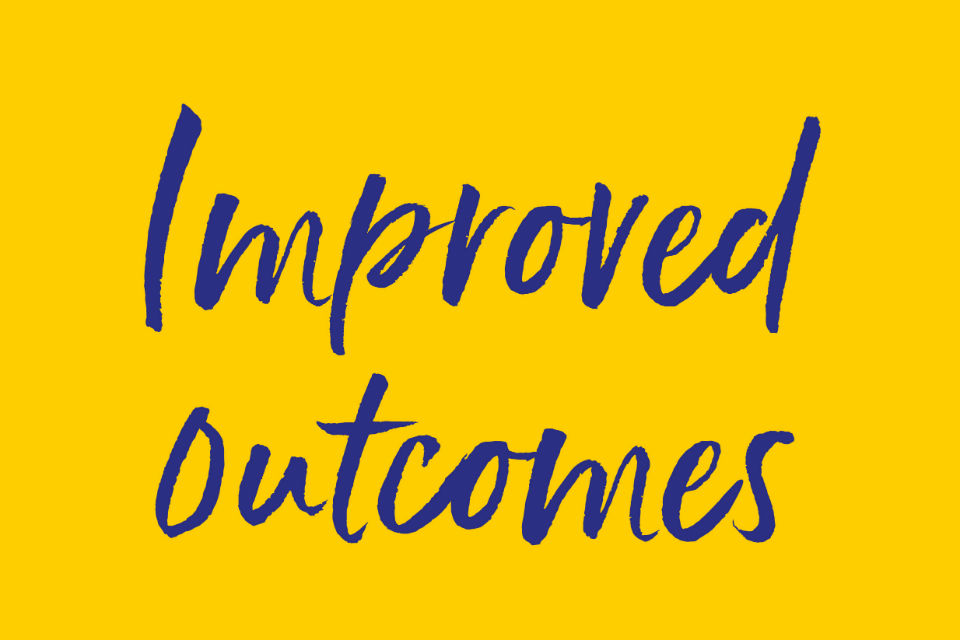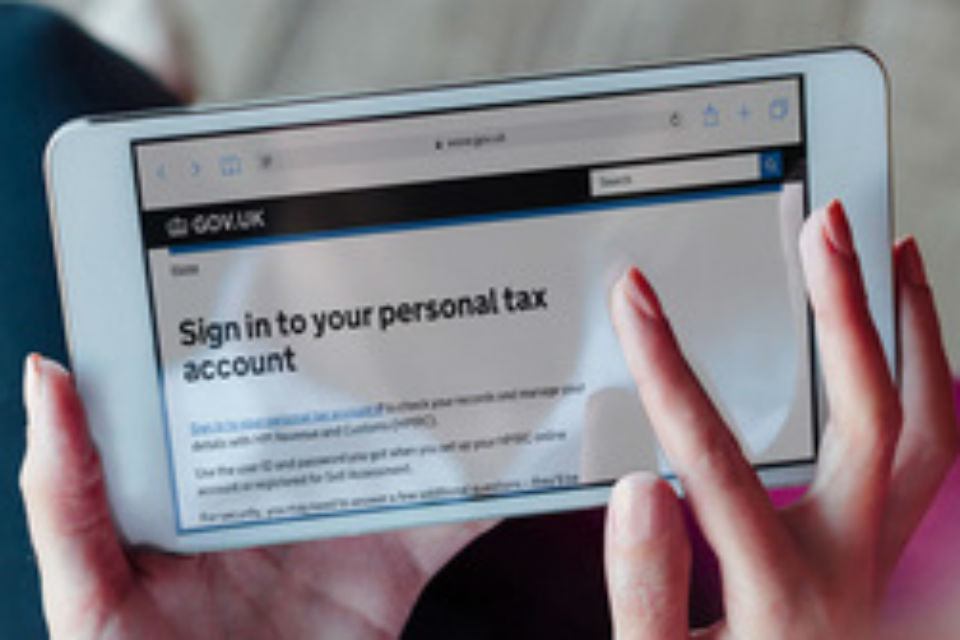
You might be asking yourself what the CEO of Her Majesty’s Revenue & Customs (HMRC) knows about leading through change. But, if you didn’t know, we are midway through delivering one of the largest organisational change programmes that has been attempted in Europe.
Back in the Spending Review 2015, HMRC managed to secure an investment of £1.3 billion over five years. The fundamentals of that investment were that we would digitise the relationship between customers and HMRC and modernise the organisation in response.
 In many respects this was a bold and visionary move. It identified how HMRC needed to change to respond in an increasingly digital, data-driven world. The payback was clear. If we could digitise the relationship, then customers would make fewer errors and we would be able target our interventions on a data- and risk-driven basis. Both meant that we would collect more tax: enough to pay back the investment in only two years after the programme was in full swing.
In many respects this was a bold and visionary move. It identified how HMRC needed to change to respond in an increasingly digital, data-driven world. The payback was clear. If we could digitise the relationship, then customers would make fewer errors and we would be able target our interventions on a data- and risk-driven basis. Both meant that we would collect more tax: enough to pay back the investment in only two years after the programme was in full swing.
Huge portfolio
But the programme aimed to go much deeper. To deliver its aims we also needed to modernise HMRC in just about every respect, from the office environment, to providing quality technology, modernising learning, improving leadership and leaning heavily into new cross-government capacity-building areas like commercial. While we were at it, we wanted to become a more diverse and inclusive organisation, given the possibly unique opportunity presented by recruiting nearly 13,000 new colleagues in the last two years alone.
The upshot of all of this was one huge portfolio with, at its height in late 2017, 15 major programmes and 267 projects in progress.
 I joined HMRC in April 2016 with the portfolio up and running. Dedicated quality leadership of these projects was all in place and we saw some great early success. The launch of the Personal Tax Account and Business Tax Account was only two years ago. Two years further on we have just passed 18 million registered users. We are one of the UK's most digital businesses: of our 2.3 billion transactions a year, 2 billion are online.
I joined HMRC in April 2016 with the portfolio up and running. Dedicated quality leadership of these projects was all in place and we saw some great early success. The launch of the Personal Tax Account and Business Tax Account was only two years ago. Two years further on we have just passed 18 million registered users. We are one of the UK's most digital businesses: of our 2.3 billion transactions a year, 2 billion are online.
And yet, with all this and so much more, we remain in the foothills of what might be possible. We’ve deployed robotics at scale, biometric voice recognition for security, and we have some fantastic experiments with Blockchain [a decentralised database system that securely stores and links transaction data].
More open
Has this all been smooth sailing? Well, frankly, not exactly. We’ve certainly learned a lot about how we should have been more open, early on, with colleagues and involved them more in major changes. Many of these changes directly impact on colleagues, on where and how they work, which is very personal.
To try and be more open, in early 2017 we involved as many colleagues as possible, almost everyone, in what values we should adopt for the future of HMRC and our collective Vision Statement. Lately, we’ve involved tens of thousands of colleagues in how we might change the performance management system from April 2018. For the future, our aim remains trying to co-create change and create a culture where everyone can be innovative. It seems to me that this resonates clearly with what colleagues wanted – an innovative culture where the views of all are respected and listened to.
All that technology change has brought some clear and very positive changes. But it hasn’t all quite landed as we wanted – yet. For example, the new fully digital Tax Free Childcare service having some teething problems in its opening months. Trying to explain to stakeholders how Agile methodology works isn’t easy. However, as you would expect, the service has improved significantly in the 10 months since its launch, working from customer feedback and continuously improving.
On my many travels around our UK offices I try to do as many in-person open Q&As as possible, and supplement that with open Q&As on our intranet. A common theme lately has been whether it is still possible to deliver this ambitious agenda while finding the bandwidth for Brexit. I’ve said publicly that I don’t think it is credible. So, we’ve been working really hard on prioritising what projects make the most difference, prioritising them and then creating the room to accommodate Brexit. But we’re doing so in a way that involves many more colleagues now than we involved way back in 2015. And when it’s agreed I plan to make the result transparent, so colleagues can see what we are continuing with, what gets elongated and what we won’t be starting.
I’m incredibly grateful to the hard work of colleagues across HMRC, not just in delivering change, but on record results for several years in a row. Together we are building a better, more digital tax system and organisation, fit for future challenges.
Follow Jon on Twitter: @JonThompsonHMRC.

4 comments
Comment by Tony Matthews posted on
i admire Jon Thompson 's optimism that digitisation will somehow how reduce errors.
" To Err is human , to screw up completely requires a computer!" is as true today as when computers were first introduced .
the user's competence drives accuracy and those accountants receiving information would rather see an incomplete record of transactions in a paper bag than a poor attempt at computer input
Comment by Simon Gleaden posted on
I wince every time I see the word "customer" on an HMRC publication where it is clear that the correct word is "taxpayer".
HMRC has one "customer" - HM Government, to which it provides the services of administering the UK tax system and collecting the taxes.
HMRC is not a "business" either - it's a Government agency.
And what on earth does "leaning heavily into new cross-government capacity-building areas like commercial" mean in English?
Comment by M Nazir posted on
I think it is easy for those outside of large organisations not to have the right level of understanding of the complexities and intricacies when delivering change programmes.
The impact is significant and cannot be underestimated. It will take some years to embed and learn new ways of working but these are positive steps.
Opening channels of communication with colleagues as well as external takes commitment and endeavour.
Criticisms and feedback along with complaints are a great source for identifying where to make surgical improvements and learn where mistakes are happening.
We have a long road ahead of us but feel that I can have a greater say in how we mould the new HMRC to be more agile and in tune with those who interact with us.
Comment by Rozanne Kidd posted on
Thanks for sharing Jon. A lot of parallels with DWP Transformational change where the commitment early on was in recognising the key enabler to supporting and empowering colleagues through such massive change starts with properly skilled and supported leaders right across the spectrum of roles and grades. A bumpy ride and still more to do as its a huge ask but a lot less bumpy than it could be with this type of people investment where people feel valued whether delivering or on the receiving end or both.
There is so much we should be sharing cross government on leading through change and perhaps in your new role as Head of ODP you can grab hold of that. Duplicated effort costs and you can't buy the type of experiences and supportive approaches out there that can help.